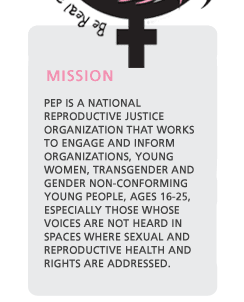Why develop a communications plan? There are lots of reasons. For one, just because you and your colleagues know about the great work you're doing doesn't mean anyone else does. When this work goes unnoticed, the reach of individual activists and grassroots organizations remains small, which means that your potential to make a difference stays small too.
Secondly, if you wait for the media to find you, you're at their mercy. If you are proactive and strategize, you're more likely to get favorable press and to make the right impression on your target audiences. Both of these are key for sustainable and effective organizing, but neither happens by accident. So what's a grassroots advocate to do?
Don't just start calling up reporters. You'll be better able to get good press if you have a broader sense of where your organization needs to go in terms of public relations. Media relations is just one component of a broader communications strategy. Read up and crank out your own Organizational Communications Plan!
Step 1: Get it clear in your head.
Determine your goal, figure out which audience you want to reach, and decide how you'll know how well your plan is working.
a) Distinguish between your goal and your mission. According to Spitfire Strategies, a communications consulting firm for nonprofits, "a goal is the next step in your overall plan for achieving your mission." Creating an economically just society in which all women have access to reproduc tive healthcare is a mission. Increasing access to EC by 10% is a goal.
b) Who is it you're trying to reach? This depends on your goal- whose decisions are you trying to influence? If your goal is to increase access to EC, then this might mean some combination of pharmacists, doctors and consumers.
c) How will you know it's working? You could measure the use of EC, but you should have markers that indicate you've made progress, like publishing a certain number of let ters to the editor or having a certain number of people on a mailing list.
d) Assess what the public perception of your issue already is, and consider how it differs or is similar to your perception of it. For example, we know it as EC, but many people know it as the morning-after pill; we know it prevents pregnancy, many people wrongly think it causes abortion. What stereotypes or misrepresentations do you have to counteract?
Step 2: Who do you talk to and what do you say?
a) This is finding your "target audience." The people whose decisions you're trying to influence may not be someone you can talk to directly (the President is one person who comes to mind). So who do they listen to? What media do they read or watch? Think outside the box-if you want to reach new audiences, you'll need new media outlets (hiphop magazines, local radio stations, neighborhood murals or beauty salons are examples).
b) Frame your issue so that it resonates with your target audience. Base it on their values and concerns. And create messages that they will easily understand. For help with pro-choice messages that target a variety of young women, check out the other resources in this section.
c) Another element of messaging is choosing who will deliver your message. Consider whose opinion people trust-would your message promoting EC be more effective if a pharmacist, rather than a local reproduc tive rights organization, were delivering it?
Step 3: Map out your plan of attack
a) Refer back to your goals and indicators of progress. What do you want your decision makers to be doing a year from now, and what are the steps necessary to make that a reality?
b) Decide which factics you will use. Tactics include everything from launching a website to postering to holding a rally.
Consider:
- whether or not they bring you closer to your goal
- what your audience will be in each one
- what your organization will do
- what you expect to result
For example, an ad campaign (1) to raise awareness of EC might (2) target local consumers by strategically placing posters near local pharmacies that inform them that EC is not carried by the pharmacy, thus denying them a basic health service. The expected result (3) is that the consumers will question the pharmacist, and the management (4) will be pressured to stock EC as well as publicize its availability.
If your tactics include talking to reporters or staging media events:
Where you go from here depends on your resources and strategy needs. You'll need to choose your reporters and media outlets based on the target audience you have chosen. Don't even think of calling a reporter until you have something to tell them (messages for your target audience). You may need to "pitch" reporters (i.e. call selected reporters and "sell them" on the newswor thy thing your organization is doing), conduct media briefings, stage a media event or seek out spots on TV or radio.
For more information on how to get started talking to reporters or staging media events, check out the resources listed below.
Two more things to note:
One, whatever you do, it's important to keep track of any and all coverage you get. Two, even if you have a small army of people working on public relations for your organization, there should be one central contact for talking to the media. People remember people, not organizations, so choose a spokesperson people can remember.
Other Resources:
| 





